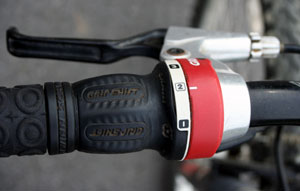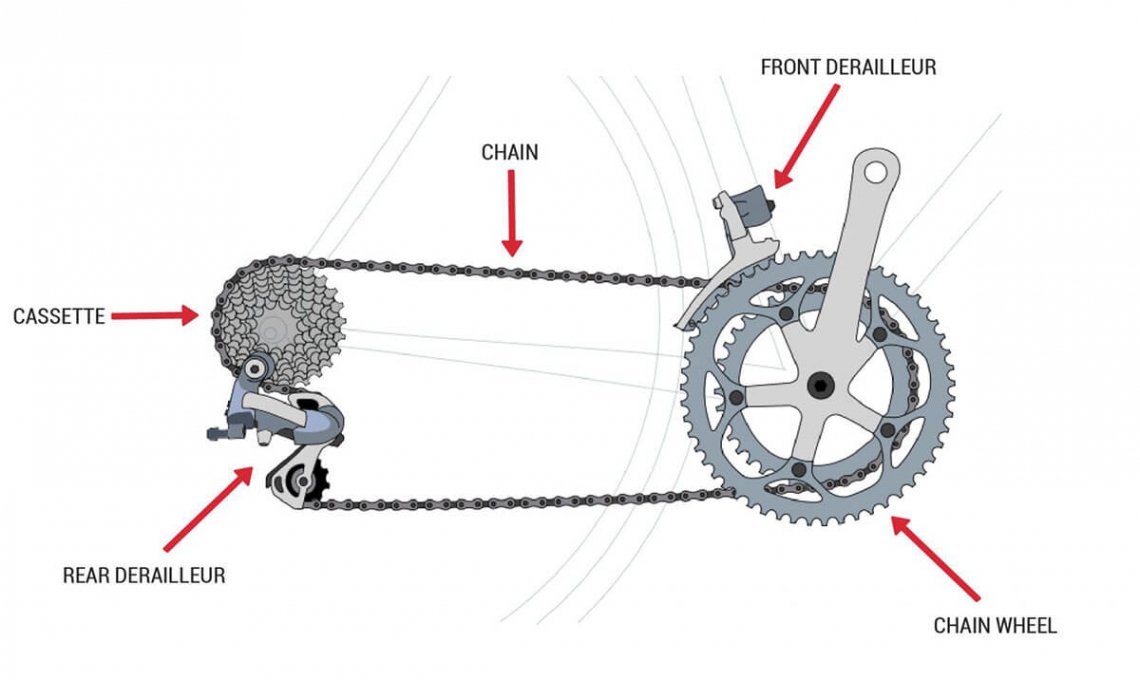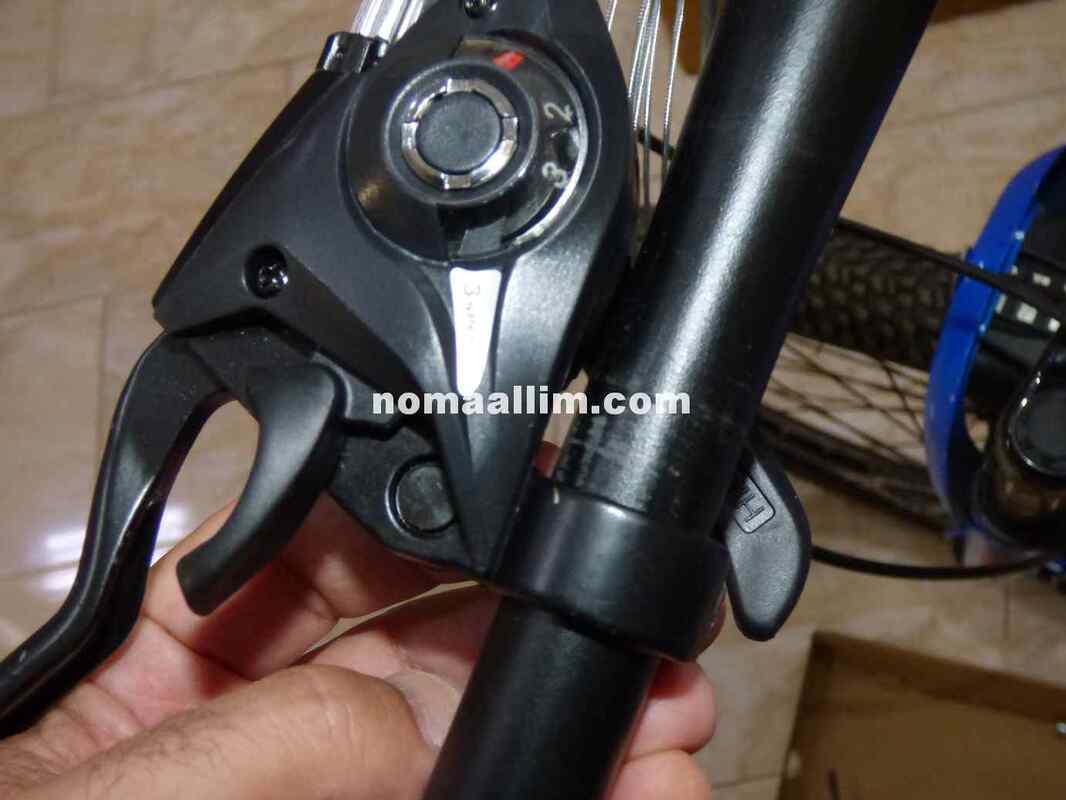Diagnosing the Problem: When to Replace Your Gear Shifter
A faulty gear shifter can be a frustrating and debilitating issue for any cyclist. Difficulty shifting, stuck gears, and worn-out components are all common signs that it’s time to consider replacing your bicycle gear shifter. Ignoring these problems can lead to further damage to your bike, resulting in costly repairs or even safety hazards.
Difficulty shifting is often the first sign of a faulty gear shifter. If you’re finding it hard to shift between gears, or if the gears are slipping or skipping, it may be a sign that your gear shifter is worn out or damaged. Stuck gears are another common issue, where the gear refuses to budge, leaving you stuck in a difficult gear. Worn-out components, such as cables or derailleurs, can also cause problems with your gear shifter.
It’s essential to address these issues promptly to avoid further damage to your bike. A malfunctioning gear shifter can put additional stress on other components, leading to premature wear and tear, and potentially causing accidents. By recognizing the signs of a faulty gear shifter and taking prompt action, you can prevent further damage and ensure a safe and enjoyable ride. In the following sections, we’ll explore the process of replacing your gear shifter, including choosing the right replacement, step-by-step instructions, and tips for maintenance and troubleshooting.
Choosing the Right Replacement: A Guide to Gear Shifter Types
When it comes to replacing your bicycle gear shifter, choosing the right type is crucial for a smooth and efficient riding experience. There are three main types of gear shifters available: mechanical, electronic, and hydraulic systems. Each type has its pros and cons, and understanding these differences is essential for selecting the best replacement for your bike.
Mechanical gear shifters are the most common type and use a cable and derailleur system to shift gears. They are reliable, easy to maintain, and affordable. However, they can be prone to wear and tear, and may require frequent adjustments. Electronic gear shifters, on the other hand, use a battery-powered system to shift gears, offering precise and instant shifting. They are more expensive than mechanical systems but offer improved performance and durability. Hydraulic gear shifters use a fluid-filled system to shift gears, providing smooth and consistent shifting. They are more complex and expensive than mechanical systems but offer improved performance and reliability.
When selecting a replacement gear shifter, consider the type of riding you do, your budget, and the compatibility of the system with your bike. It’s essential to choose a gear shifter that is compatible with your bike’s components, including the derailleur, cassette, and chainrings. Additionally, consider the level of maintenance and adjustment required for each type of gear shifter. By understanding the pros and cons of each type, you can make an informed decision and choose the best replacement for your bike, ensuring a smooth and efficient riding experience.
How to Replace Your Gear Shifter: A Step-by-Step Guide
Replacing a bicycle gear shifter can seem like a daunting task, but with the right tools and a little patience, it’s a job that can be done at home. In this section, we’ll provide a step-by-step guide on how to replace your gear shifter, including the tools needed, disassembly, and reassembly.
Tools Needed:
- Allen wrenches (3, 4, 5, and 6 mm)
- Torx wrench (for Shimano shifters)
- Cable cutters
- Cable tension gauge
- New gear shifter
Disassembly:
1. Shift the gears into the smallest cog and chainring to relieve tension on the cables.
2. Remove the cable anchor bolt and slide the cable out of the shifter.
3. Remove the shifter mounting bolt and slide the shifter off the handlebar.
4. Remove any additional components, such as the brake lever or grip, to access the shifter.
Reassembly:
1. Install the new gear shifter onto the handlebar, ensuring it’s securely fastened.
2. Reconnect the cable to the shifter and anchor bolt, making sure it’s properly seated and tensioned.
3. Adjust the derailleur and cable tension to ensure smooth shifting.
4. Test the gears to ensure they’re shifting smoothly and correctly.
Tips and Tricks:
Make sure to handle the new gear shifter by the body, not the levers, to avoid damaging the internal mechanisms.
Use a cable tension gauge to ensure the correct tension is applied to the cables.
Take your time and work methodically to avoid mistakes and ensure a smooth replacement process.
By following these steps and tips, you’ll be able to replace your bicycle gear shifter with confidence and get back to riding in no time. Remember to always refer to your bike’s manual for specific instructions and guidelines for your particular model.
SRAM vs Shimano: A Comparison of Popular Gear Shifter Brands
When it comes to replacing your bicycle gear shifter, one of the most important decisions you’ll make is choosing the right brand. Two of the most popular gear shifter brands are SRAM and Shimano, each with their unique features, advantages, and disadvantages. In this section, we’ll compare and contrast these two brands, highlighting their differences and similarities to help you make an informed decision.
SRAM Gear Shifters:
SRAM gear shifters are known for their simplicity, durability, and ease of use. They offer a wide range of gear shifter models, from entry-level to high-end, making them a popular choice among cyclists. SRAM gear shifters are also known for their compatibility with a wide range of components, making them a great option for those who want to upgrade their bike’s gear shifter without replacing other components.
Shimano Gear Shifters:
Shimano gear shifters are renowned for their precision, reliability, and high-performance capabilities. They offer a range of gear shifter models, from entry-level to professional-grade, making them a popular choice among serious cyclists. Shimano gear shifters are also known for their advanced technology, including their Shadow Plus technology, which provides improved shifting performance and reduced wear and tear.
Comparison:
Both SRAM and Shimano gear shifters offer high-quality performance, but they differ in their design, functionality, and compatibility. SRAM gear shifters are known for their simplicity and ease of use, making them a great option for those who want a hassle-free gear shifter. Shimano gear shifters, on the other hand, are known for their advanced technology and high-performance capabilities, making them a great option for serious cyclists.
Compatibility Issues:
When choosing a gear shifter brand, it’s essential to consider compatibility issues. SRAM and Shimano gear shifters are not compatible with each other, so it’s crucial to choose a brand that is compatible with your bike’s components. Additionally, some gear shifter models may not be compatible with certain types of brakes or derailleurs, so it’s essential to check compatibility before making a purchase.
In conclusion, both SRAM and Shimano gear shifters offer high-quality performance, but they differ in their design, functionality, and compatibility. By understanding the unique features and advantages of each brand, you can make an informed decision and choose the best gear shifter for your bike. Remember to consider compatibility issues and choose a brand that is compatible with your bike’s components for a smooth and successful bicycle gear shifter replacement.
Troubleshooting Common Gear Shifter Problems
Even with proper maintenance and care, gear shifters can still experience problems that affect their performance. In this section, we’ll provide solutions to common gear shifter problems, including misaligned derailleurs, worn-out cables, and faulty shifters. By understanding how to troubleshoot and fix these issues, you can ensure your gear shifter is functioning optimally and extend its lifespan.
Misaligned Derailleurs:
Misaligned derailleurs are a common problem that can cause poor shifting performance. To fix this issue, start by adjusting the derailleur’s limit screws to ensure proper alignment. Next, check the derailleur’s hanger for any signs of bending or damage, and replace it if necessary. Finally, adjust the derailleur’s barrel adjuster to fine-tune the shifting performance.
Worn-Out Cables:
Worn-out cables can cause poor shifting performance and premature wear on the gear shifter. To fix this issue, start by inspecting the cables for any signs of fraying or damage. If the cables are damaged, replace them with new ones. Next, adjust the cable tension to ensure proper shifting performance.
Faulty Shifters:
Faulty shifters can cause poor shifting performance and affect the overall riding experience. To fix this issue, start by inspecting the shifter for any signs of damage or wear. If the shifter is damaged, consider replacing it with a new one. Next, adjust the shifter’s indexing to ensure proper shifting performance.
Adjusting and Fine-Tuning:
Adjusting and fine-tuning the gear shifter is crucial for optimal performance. Start by adjusting the derailleur’s limit screws to ensure proper alignment. Next, adjust the cable tension to ensure proper shifting performance. Finally, fine-tune the shifter’s indexing to ensure smooth and precise shifting.
By following these troubleshooting tips, you can fix common gear shifter problems and ensure your gear shifter is functioning optimally. Remember to perform regular maintenance and inspections to prevent premature wear and tear, and consider upgrading your gear shifter for improved performance and durability. With a properly functioning gear shifter, you can enjoy a better riding experience and extend the lifespan of your bicycle. Whether you’re looking to replace your gear shifter or simply want to improve its performance, following these troubleshooting tips can help you achieve your goals.
Upgrading Your Bike’s Gear Shifter: Is it Worth the Investment?
Upgrading your bike’s gear shifter can be a significant investment, but it can also bring numerous benefits to your riding experience. In this section, we’ll discuss the advantages of upgrading your gear shifter, including improved performance, increased durability, and enhanced riding experience. We’ll also weigh the costs and benefits of upgrading and provide guidance on when it’s worth the investment.
Improved Performance:
A new gear shifter can significantly improve your bike’s shifting performance, providing smoother and more precise gear changes. This can be especially beneficial for riders who frequently shift gears, such as those who ride in hilly or mountainous terrain. With a high-quality gear shifter, you can enjoy a more responsive and efficient ride.
Increased Durability:
A new gear shifter can also increase the durability of your bike’s components, reducing the risk of premature wear and tear. This can be especially beneficial for riders who log high mileage or ride in harsh conditions. By upgrading your gear shifter, you can extend the lifespan of your bike’s components and reduce maintenance costs.
Enhanced Riding Experience:
A new gear shifter can also enhance your overall riding experience, providing a more comfortable and enjoyable ride. With a high-quality gear shifter, you can focus on the road ahead, rather than worrying about faulty shifting performance. This can be especially beneficial for riders who value comfort and performance.
Costs and Benefits:
While upgrading your bike’s gear shifter can be a significant investment, it can also provide long-term benefits. By weighing the costs and benefits of upgrading, you can make an informed decision about whether it’s worth the investment. Consider factors such as your riding style, the condition of your bike’s components, and your budget to determine whether upgrading your gear shifter is right for you.
When to Upgrade:
So, when is it worth upgrading your bike’s gear shifter? If you’re experiencing frequent shifting problems, or if your bike’s components are showing signs of wear and tear, it may be time to consider upgrading. Additionally, if you’re looking to improve your bike’s performance or enhance your riding experience, upgrading your gear shifter can be a worthwhile investment. By considering the benefits and costs of upgrading, you can make an informed decision about whether it’s right for you.
In conclusion, upgrading your bike’s gear shifter can be a valuable investment for riders who value performance, durability, and comfort. By weighing the costs and benefits of upgrading, you can make an informed decision about whether it’s worth the investment. Whether you’re looking to improve your bike’s shifting performance or enhance your riding experience, a new gear shifter can be a valuable upgrade for your bicycle gear shifter replacement.
Maintenance and Care: Tips for Extending the Life of Your Gear Shifter
Proper maintenance and care are essential for extending the life of your gear shifter and ensuring optimal performance. In this section, we’ll provide tips and advice on how to properly maintain and care for your gear shifter, including cleaning, lubricating, and inspecting the component.
Cleaning Your Gear Shifter:
Regular cleaning is crucial for removing dirt, grime, and other contaminants that can affect your gear shifter’s performance. Use a soft-bristled brush and a mild detergent to clean the gear shifter, paying particular attention to the pivot points and other areas prone to dirt buildup. Avoid using harsh chemicals or abrasive materials that can damage the component.
Lubricating Your Gear Shifter:
Lubrication is essential for reducing friction and wear on your gear shifter’s moving parts. Use a high-quality lubricant specifically designed for bicycle components, and apply it to the pivot points and other areas where friction occurs. Be careful not to over-lubricate, as this can attract dirt and contaminants.
Inspecting Your Gear Shifter:
Regular inspection is critical for identifying potential issues before they become major problems. Inspect your gear shifter regularly for signs of wear, such as worn-out cables, misaligned derailleurs, or faulty shifters. Addressing these issues promptly can help prevent further damage to your bike and ensure optimal performance.
Regular Maintenance Schedule:
To ensure optimal performance and extend the life of your gear shifter, establish a regular maintenance schedule. This can include weekly or monthly checks, depending on your riding frequency and conditions. By staying on top of maintenance, you can prevent premature wear and tear and ensure your gear shifter continues to perform at its best.
Benefits of Regular Maintenance:
Regular maintenance can have a significant impact on your gear shifter’s performance and longevity. By staying on top of maintenance, you can enjoy improved shifting performance, increased durability, and a reduced risk of premature wear and tear. Additionally, regular maintenance can help prevent costly repairs and reduce the need for bicycle gear shifter replacement.
Conclusion: Shifting into High Gear with Confidence
In conclusion, replacing your bike’s gear shifter can be a daunting task, but with the right guidance, it can be a straightforward process. By understanding the common signs of a faulty gear shifter, choosing the right replacement, and following a step-by-step guide, you can ensure a smooth and successful replacement process.
Additionally, regular maintenance and care, troubleshooting common problems, and considering upgrading your gear shifter can all contribute to a better riding experience. Remember, a well-maintained gear shifter is essential for optimal performance, and neglecting it can lead to further damage to your bike.
By following the tips and advice outlined in this article, you can take control of your bike’s gear shifter and enjoy a more efficient, reliable, and enjoyable ride. Whether you’re a seasoned cyclist or a beginner, bicycle gear shifter replacement is a crucial aspect of bike maintenance that should not be overlooked.
So, take the first step towards shifting into high gear with confidence. Replace your gear shifter with a new one, and experience the difference it can make in your riding experience. With the right knowledge and tools, you can overcome any gear shifter-related challenges and enjoy a smoother, more efficient ride.









